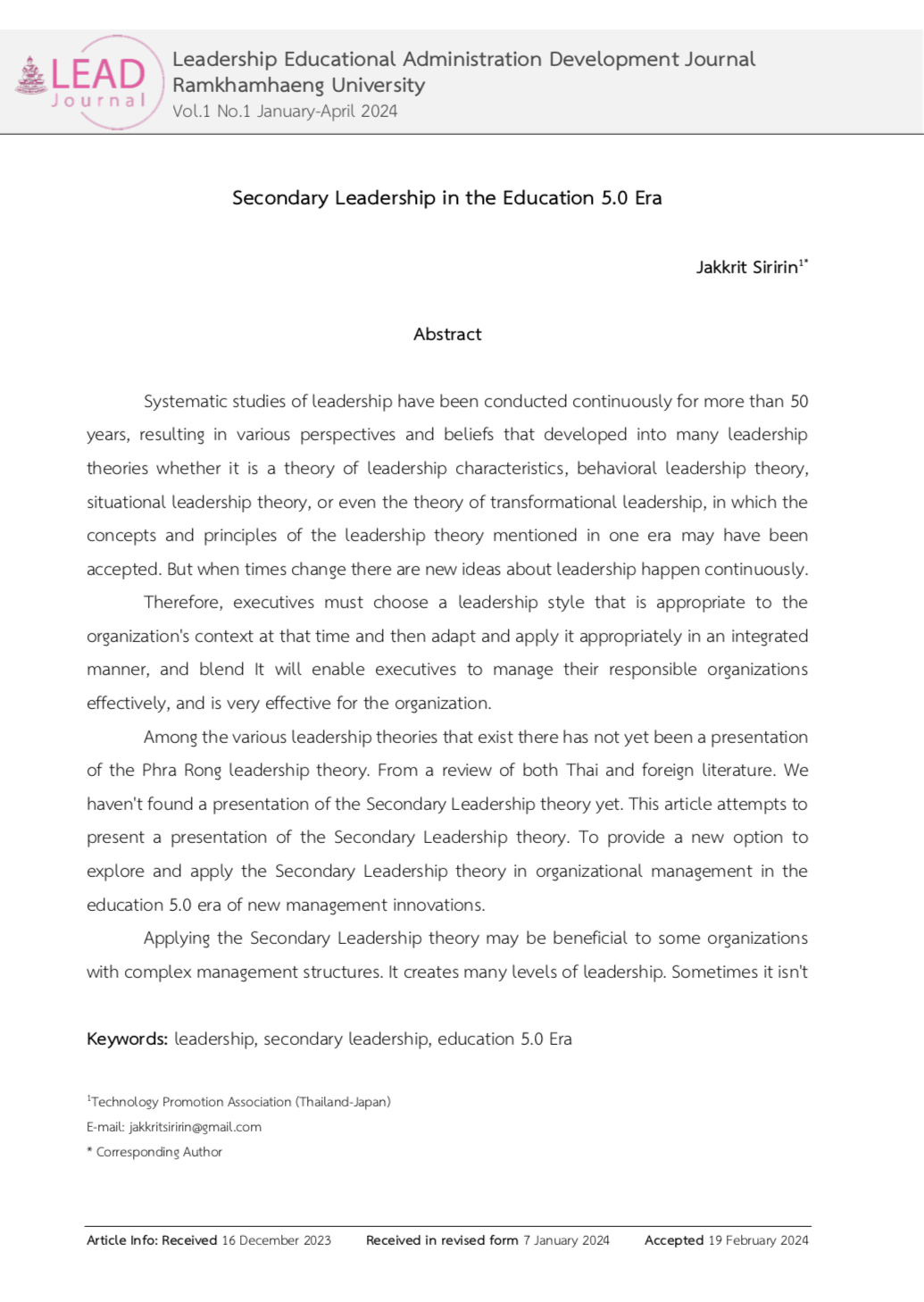Secondary Leadership in the Education 5.0 Era
Main Article Content
บทคัดย่อ
Abstract
Systematic studies of leadership have been conducted continuously for more than 50 years, resulting in various perspectives and beliefs that developed into many leadership theories whether it is a theory of leadership characteristics, behavioral leadership theory, situational leadership theory, or even the theory of transformational leadership, in which the concepts and principles of the leadership theory mentioned in one era may have been accepted. But when times change there are new ideas about leadership happen continuously.
Therefore, executives must choose a leadership style that is appropriate to the organization's context at that time and then adapt and apply it appropriately in an integrated manner, and blend It will enable executives to manage their responsible organizations effectively, and is very effective for the organization.
Among the various leadership theories that exist there has not yet been a presentation of the Phra Rong leadership theory. From a review of both Thai and foreign literature. We haven't found a presentation of the Secondary Leadership theory yet. This article attempts to present a presentation of the Secondary Leadership theory. To provide a new option to explore and apply the Secondary Leadership theory in organizational management in the education 5.0 era of new management innovations.
Applying the Secondary Leadership theory may be beneficial to some organizations with complex management structures. It creates many levels of leadership. Sometimes it isn't
Downloads
Article Details

อนุญาตภายใต้เงื่อนไข Creative Commons Attribution-NonCommercial-NoDerivatives 4.0 International License.
The authors are solely accountable for the ideas and recommendations articulated in the articles published in the LEAD Journal RU. Should there be any inaccuracies, the authors accept full responsibility for such errors.
Moreover, the Editorial Board, Editorial Team, and Committee of the LEAD Journal RU are committed to maintaining the integrity of the principles reflected in the authors' contributions.
Consequently, Ramkhamhaeng University, the Editorial Board, Editorial Team, and Editors shall not be held liable for any outcomes arising from the authors' presentation of their ideas and recommendations within the LEAD Journal RU.
เอกสารอ้างอิง
Bass, B. M. and Avolio, B. J. (1999). Improving Organizational Effectiveness through Transformational Leadership. Thousand Oaks, CA: Sage.
Bass, B. M. and Riggio, R. E. (2006). Transformational leadership (2nd ed.). Lawrence Erlbaum Associates Publishers.
Burns, J. M. (1978). Leadership. New York: Harper & Row.
Kananurak, N. (2011). Leadership Role for Producing Professional Employees. Academic journal University of the Thai Chamber of Commerce, 31(1). 123-133.
Phongsriwat, S. (2013). Superior Leadership. Retrieved from http://suthep.crru.ac.th
Phothikun, P. (2007). Strategies for using Power in Organizations Effectively. Retrieved from www.moe.go.th


